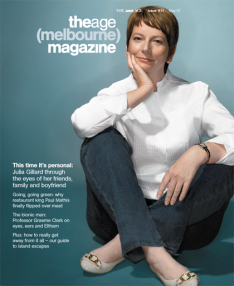2013 – The year in newspapers
The year begins  with the news of a new challenger in the online space. British newspaper The Guardian announces it will launch a digital only Australian edition hiring a staff of around 20 headed by UK deputy editor Katharine Viner. Viner will go on to poach a number of big names from Fairfax including Lenore Taylor, Katharine Murphy former star columnist David Marr.
with the news of a new challenger in the online space. British newspaper The Guardian announces it will launch a digital only Australian edition hiring a staff of around 20 headed by UK deputy editor Katharine Viner. Viner will go on to poach a number of big names from Fairfax including Lenore Taylor, Katharine Murphy former star columnist David Marr.
—————————————————
February sees Brett Chenoweth CEO of APN News & Media and three directors forced to resign after key shareholders oppose a move by management for a major capital raising for the troubled company.
——————————————————————————————————–
In March Fairfax implements its plan to shift weekday print editions from broadsheet format to a tabloid, or compact size.
——————————————————————————————————–
The Labor Government introduces a series of media law reforms that are designed to strengthen the powers of the Australian Press Council. However, communications minister Stephen Conroy is forced to withdraw the bills in the face of fierce opposition from the media.
——————————————————————————————————–
In early April, Fairfax announces a major restructure which sees the company split into five divisions as well as triggering the departure of senior executives Jack Matthews and Allen Browne. The restructure also introduces copy sharing between The Australian Financial Review, The Sydney Morning Herald and The Age business desks. Journalist Paddy Manning pens a piece for Crikey denouncing the “creeping advertorial” that he argues is appearing in the AFR. Manning is forced to resign.
——————————————————————————————————–
 In May News Limited’s NSW regional director Michael Miller is appointed CEO of APN replacing Brett Chenoweth.
In May News Limited’s NSW regional director Michael Miller is appointed CEO of APN replacing Brett Chenoweth.
———————————————————————
News Limited announces a metered paywall for its metropolitan tabloid newspapers, largely abandoning the “freemium” model previously trialled.
———————————————————————
In late May, The Guardian formally launches its Australian online operation while US viral news website Buzzfeed also announces plans to enter the local market, later appointing News’s Simon Crerar as editor.
——————————————————————————————————–
The last month of the financial year sees what the Media Entertainment Arts Alliance (MEAA), the journalist union, describes as “an end of financial year clear out” of journalists with more than 200 journos, mainly from newspapers, given redundancy. Worst affected is Western Australian Newspapers where one-in-six journalists are made redundant.
——————————————————————————————————–
June also sees major leadership changes at News Limited which, in the face of significant falls in circulation, fires Queensland editorial director David Fagan and Courier Mail editor Michael Crutcher.
——————————————————————————————————–
Despite an Australian heritage of more than 90 years, at the end of June, News Limited announces it will rebrand its Australian operations as News Corp Australia.
——————————————————————————————————–
In July, Fairfax introduces a paywall across its websites The Age and The Sydney Morning Herald.
——————————————————————————————————–
News Corp Australia announces the return of Brett Clegg in the role of NSW regional director. He moves across from his role as director of business media at Fairfax.
——————————————————————————————————–
August sees one of the biggest announcements of 2013 with the departure of News Corp CEO Kim Williams. He is replaced by long time News loyalist Julian Clarke. Clarke wastes no time expelling the corporate consultants favoured by his predecessor and restructuring the company to restore separate sales divisions.
——————————————————————————————————–
Fairfax dominates the major categories of the Pacific Area Newspaper Publishers’ Association Awards with The Age winning newspaper of the year. News Corp titles pick up just one award.
——————————————————————————————————–
August sees the launch of the long awaited new readership metric EMMA by industry body The Newspaper Works.
——————————————————————————————————–
In September News Corp is forced for the first time to release financial information about its Australian operations, following the splitting of its parent company into two. The financials show revenues for The Australian newspaper have fallen $350m compared to the previous year.
——————————————————————————————————–
In October,  Fairfax announces the closure of its Sydney and Melbourne magazine inserts and another round of 25 redundancies resulting from the merger of its business desks.
Fairfax announces the closure of its Sydney and Melbourne magazine inserts and another round of 25 redundancies resulting from the merger of its business desks.
————————————————
Days later the publisher announces business magazine BRW will cease to be published as a weekly print title.
————————————————
News Corp Australia quietly winds back its plans to establish a national news desk returning key reporters in areas such as politics to their former mastheads.
——————————————————————————————————–
Figures released in November by the Audit Bureau of Circulations show double digit declines for Australia’s major publishers both in weekday and weekend editions.

This post comes from the Encore & mUmBRELLA Annual available on iPad and iPhone.
Download it from encore.com.au




It’s amazing how much has happened this year! Can’t wait to see what 2014 has in store for us.
User ID not verified.